On Monday, January 13, 2014, Paul Leringato and I climbed into my Toyota Land Cruiser and headed to the Naibunga Conservancy, one of NRT’s more remote conservancies. Loaded with a change of clothing, computer, school survey forms, power bars, and a couple of bedrolls (just in case we found ourselves stuck overnight under an acacia tree), we were going to visit the schools in the conservancy and assess their teachers, students and infrastructure. Four five-liter bottles of water, toilet paper, and a few biscuits (cookies) from the Nakumat in Nanyuki completed our provisioning.
Turning north out of Nanyuki, fifteen kilometers of paved and 40 kilometers of dirt roads brought us to Ilpolei — what Kenyans call a shopping center, a long concrete block building with five to ten doorways leading to various shops and restaurants. The swirling dust and equatorial dry season midday sun made the spalling concrete, litter, stained walls, collapsing wooden awnings, and iron bars on windows and doors less attractive than they sound. We met up with Beatrice Lampaira, the 24 year old manager of Naibunga Conservancy and scheduled our next few days.
Paul and I completed our first day by visiting the Kimanjo Primary and Secondary schools. By the time we drove the additional 20 kilometers to our lodgings, the White Spear Palace hotel in Oldonyiro, it was getting dark. The White Spear Palace is a pleasant Moorish looking hotel faced with tile. The rooms are small with one or two short beds, each with its own mosquito net. When I stretched out, my feet hung over the end and I’m only 5’ 10”. There is one room with a western toilet, but that was only for the faint at heart. The rest of us used the shared, Kenyan-style facilities out back.
Walking past a man sitting on a low concrete wall plucking a chicken, I found the two slit-toilet stalls, one with the door hanging off. I used the stall with the door intact but once the door was closed, the odiferous 3’ by 4’ room was rendered virtually black. Squatting in a dark smelly room was not conducive to opening my Kindle and enjoying a few minutes of quiet reading. Showering was more pleasant. First I grabbed the plastic bucket from my room, filled it from the hot water spigot next to the toilets, carried the water into the wash room, shut the door and bathed by splashing myself from the bucket. The warmth was a nice counterpoint to the cool morning air.
When I got back to Lewa, Mike Harrison, NRT’s CEO, said, “I hear that you have experienced a 500 schilling per night (about $6.00 USD) hotel.” He was astonished. I answered that it wasn’t that bad. Where else will you be hurried out of a narrow central courtyard in the morning so that you don’t get in the way of the large bull being driven out the front door.
We stayed at the White Spear for three nights. Each evening we went to the Serengeti Trails for dinner. The menu consisted of stewed goat, fried goat, or grilled goat; all served in a broth with ugali (boiled masa flour), rice, or potatoes. Unctuous, strong flavored and a bit gamey, the goat was as much bone as meat. Paul thoroughly enjoyed his.
Paul and I would walk to the Serengeti Trails and order the amount of goat meat or offal we wanted from the carcasses hanging in the small butchery to the right of the door. After specifying how we wanted the meat cooked and which side dishes we wanted, we entered the bar room. During the hour it took to cook dinner, I would have a Tusker beer and Paul a Lime soda while we discussed the day and watched the news in Kiswahili followed by an incredibly bad Italian soap opera poorly dubbed in English with a group of 10 – 15 locals huddled in front of the TV. When the goat was ready, we were lead outside and seated at a table with a dim solar powered lantern for lighting. We then shared the family style presentation while house cats wound around our feet and dogs sat a few feet away begging for scraps.
On the next to last day of my trip to Naibunga, I enjoyed Kenyan cuisine (goat) a final time on market day in Kimanjo. The meal was the same but this time it was midday in a small wooden diner. Surrounded by about 18 men sitting at two long wooden tables in a 15’ by 15’ room, I sat next to a couple of Maasai Moran (warriors) in full dress with beaded bracelets, head pieces, ponga (machete), braided hair and wearing a couple of shuka. I asked the room if I could take a picture. A large rough looking middle aged man sitting against the opposite wall frowned and shook his head. I put away my camera. The experience was worth the 150 Ksh ($2.00 USD) price of the meal.
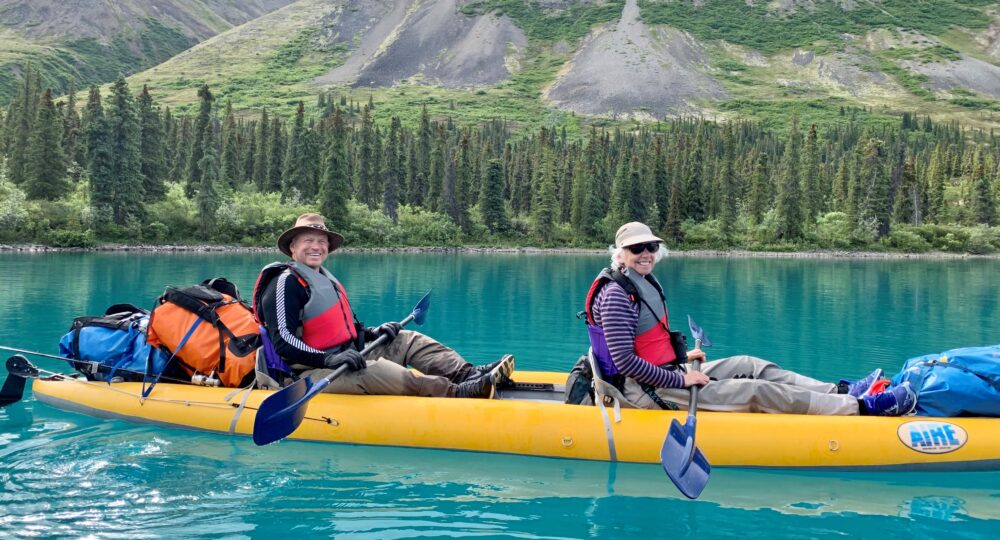
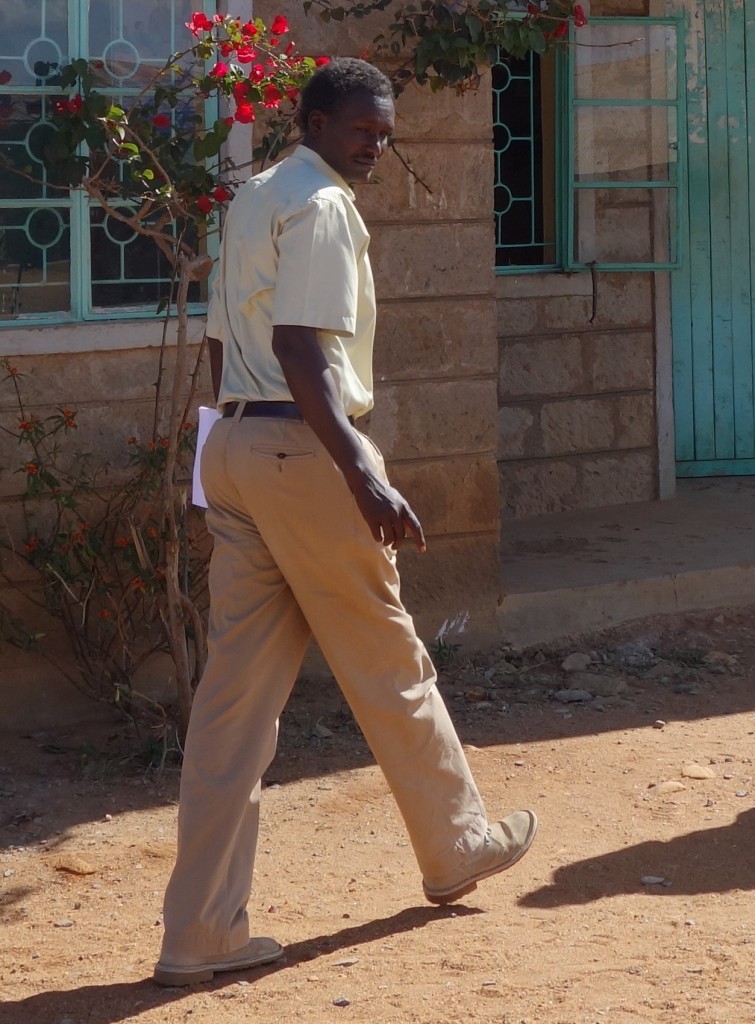
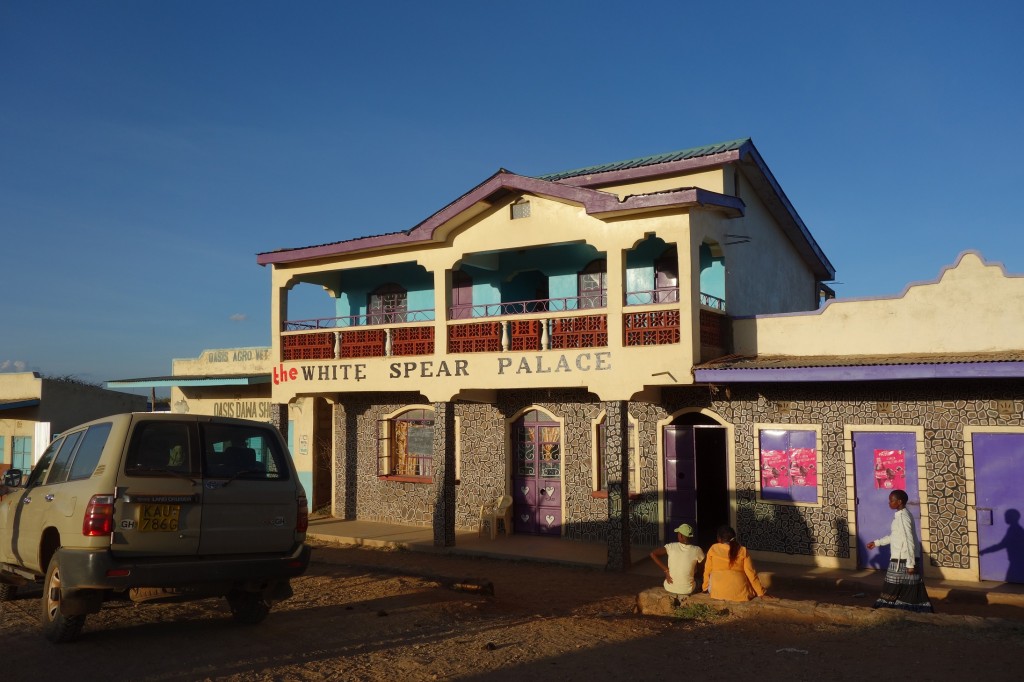
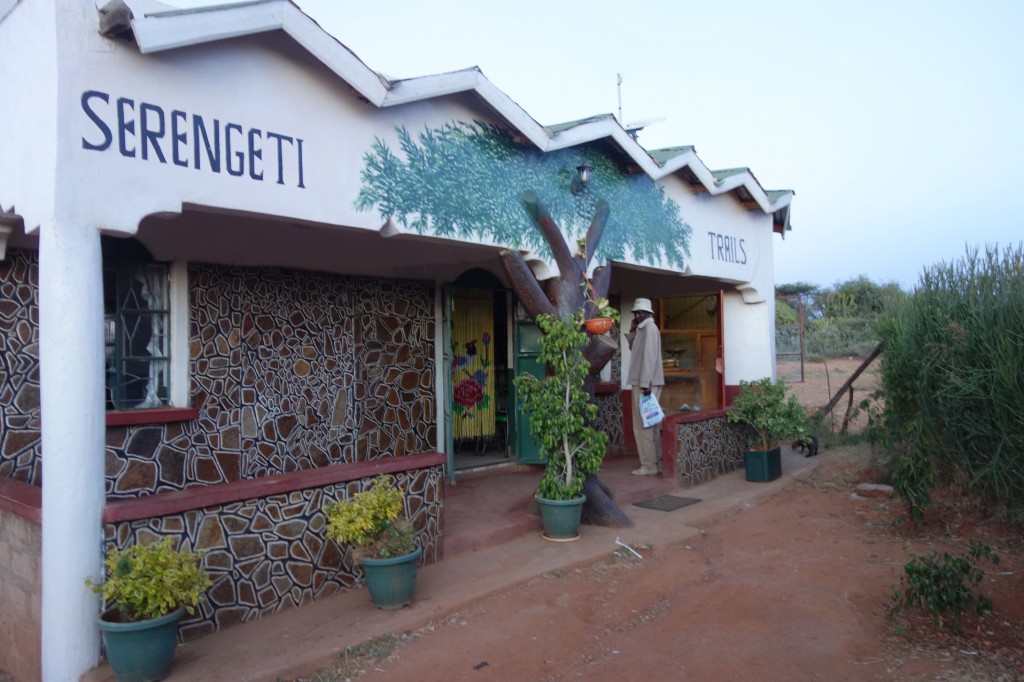
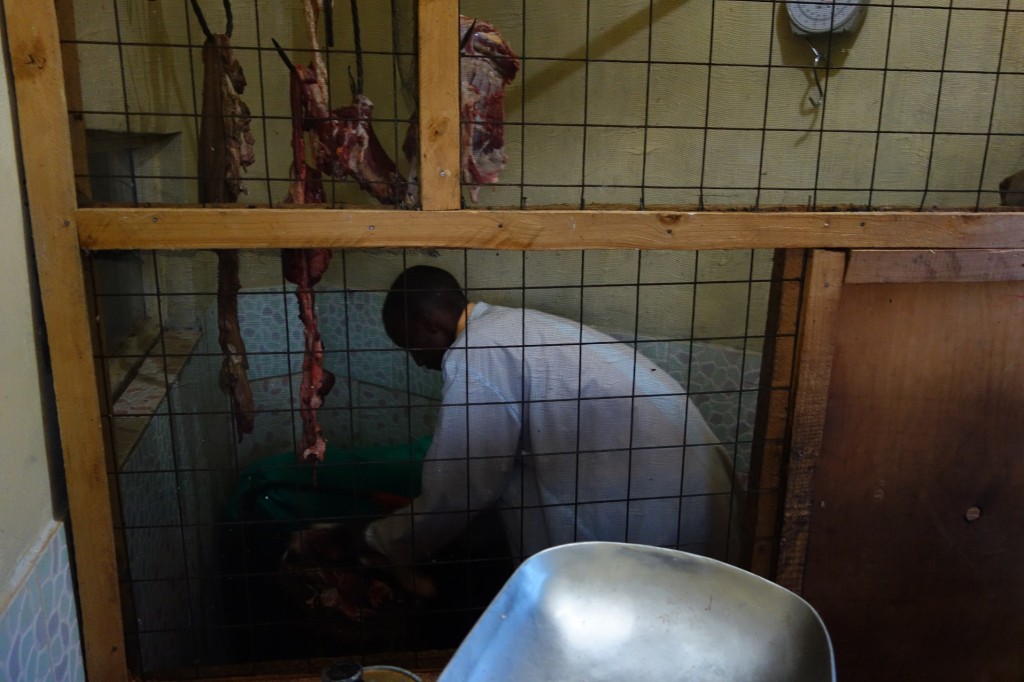
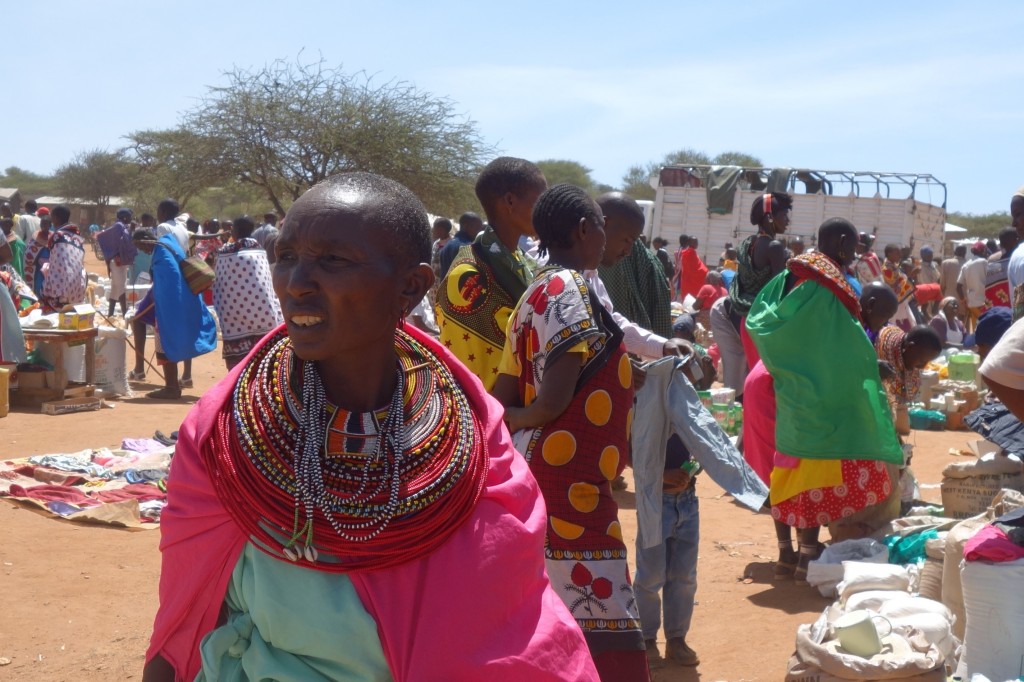
Great detail of just another day in Kenya. Too bad about the missed picture. I bet that was awkward!
Had you ever eaten goat before Africa? Will you likley eat it again back in the states, cooked american style? Do you really like it or is it just nourshing.
I have had goat in the US. Our gourmet club had it once. I had goat again last night on a road trip to Biliqo Bulesa, another NRT conservancy. This was better than my previous goat meals. My cook got goat without a lot of bones. It takes getting used to but it isn’t bad. I’m sure a few more meals and I will say its good.